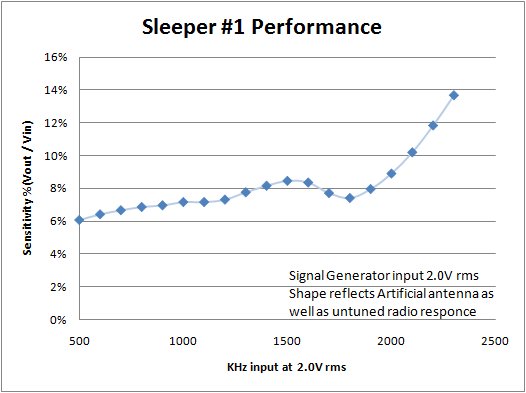

It is always interesting to get down to bare essentials, to do the absolute minimum and still get a working instrument. It is not for nothing that MB Sleeper included a circuit diagram for this hookup, it is a functionning radio. This circuit is essentially a detector of radio broadcast energy. It has no tuneing functionality. Resonance is extremely broad although weakly peaking as determined by the impedence and capacitance of the antenna itself. In part my idea is to see if it is possible to determine this peak region.
I present the set photo with a 1N5819 Schottky diode but it works well with virtually any diode, only the sensitivity changes. I even tried a Zenner diode but had to attach the Radio Shack mini-amp and crank it up. Still, it worked ok. So, more to come..
As shown, the radio passes most loudly a local powerhouse spanish format station. It is quite sensitive as one can imagine. Listening closely and you can certainly hear the other stations on the broadcast band competing for attention. My question now, do I make a breadboard extravaganza of this set? On va voir...


The hookup in its parallel and series configuragions. In either case I really cannot hear any signal with just a headphone or crystal earplug. With amplification I can get good signal strength with the parallel hookup giving slightly more sensitivity than the series hookup.

Hooking parallel configuration to my signal generator can give an idea of the performance of the radio across the spectrum. I measured the mV output in 100 KHz increments from 500 to 2300 KHz. Across the broadcast band the set has faitly flat responce with a slight tendancy to resonance about 1500 KHz and then increasing sensitivity from 1900 KHz on up. Keep in mind that the set is hooked to a dummy antenna rather than my actual long wire. Still this gives an idea of the overall untuned nature of the circuit.
When I hook in a series configuraiton I am unable to get a measurement, only 0V DC output. I am working on why this may be the case. Drives me nuts.
Return..
Back to Main....